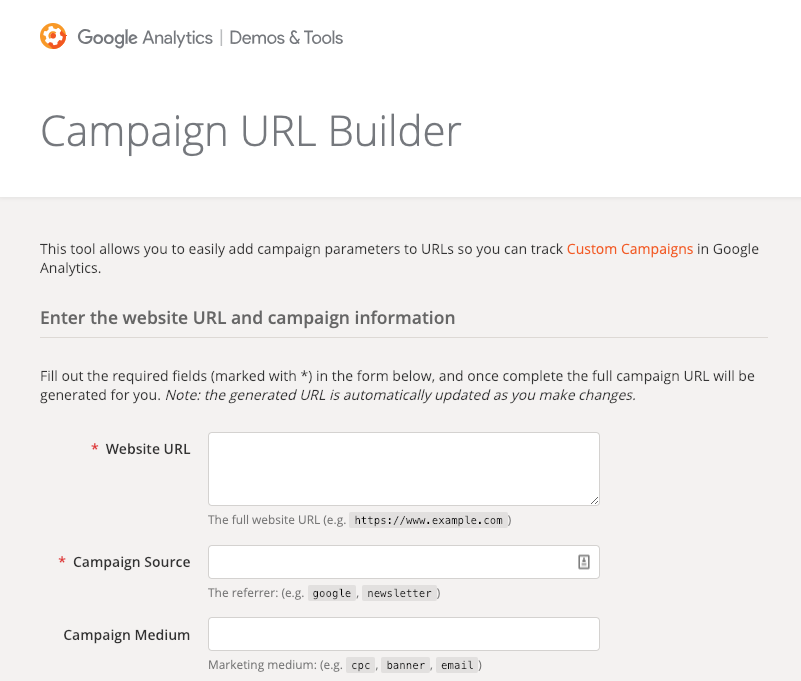Whether you’re launching a social media campaign or refreshing your site with new content, online visitors can come from dozens of sources.
With all these different channels, it can be hard to pinpoint your best sources of referral traffic and whether you’re getting a return on investment for all of your marketing and outreach efforts.
That’s where UTM codes can help — using UTM codes allow for better track site visits. Here’s an overview of why you should take advantage of them and how to get started.
What are UTM codes?
UTM codes are codes you can add to the end of a URL that allow Google Analytics to provide more detailed information about sources of referral traffic and campaign performance.
UTM codes include three main parameters: campaign source, campaign medium, and campaign name. Campaign source can include search engines like Google and social media sites like Facebook or Twitter — or even another website or blog. It basically indicates where your traffic is coming from for a given campaign or piece of content.
Campaign medium describes the type of campaign, such as an email campaign, or newsletter that brings traffic to your website. The campaign name indicates which specific campaign or marketing initiative generates traffic to your site.
For example, let’s say you do a winter promotion for a specific product line, creating a UTM code such as “utm_campaign= 2019 winter promotion” and adding it to the end of a URL will tell you that visitors came to your site as a result of clicking this specific link.
How UTM codes help you track campaign performance
That’s just one example of how UTM codes are useful. You can also use these codes to track social media engagement, email campaigns, display ads, blogs, keyword terms, and anything else that involves people clicking on links from elsewhere on the web to land on your site.
For example, when you add a UTM code to a blog post link that you promote on Facebook, you’ll get metrics for how many people clicked on the link and came to your site as a result. You can do the same thing for links you include in an email blast or newsletter. If you offer special discounts or promotions, or create a downloadable e-book that will help you generate leads, adding UTM codes to these links within your email or social media promotions will help you determine which channel or platform gives you the best return — and which one may not be worth the effort.
When it comes to metrics and marketing, UTM codes are particularly useful to gauge ad performance. Display ads can take up a lot of your marketing budget, but if you find out certain types of display ads perform better, such as ads with a more vibrant image, you may decide to redirect your valuable time and resources to making more ads that actually convert.
How to begin using UTM codes
You can use several tools to create UTM codes. Google Campaign URL Builder is a free tool that will create individual codes for you once you enter information such as the website URL, campaign source, campaign medium, campaign name, and a few other details.

If you have a WordPress plugin-enabled plan, you can take advantage of plugins like Easy UTM tracking with a contact form or UTM for Feeds. Just log into your account and click on the “Plugins” link in your left sidebar. From there, enter “UTM” in the search bar to find relevant plugins.

Understanding your website’s traffic
It’s not enough to launch a site and hope people will come. You have to promote your content. But to be effective, you need to understand where to invest your time. UTM codes allow you to make more informed, data-driven decisions about how you promote your site. There are plenty of tools out there to help you create UTM codes and attract even more visitors.
You might also like: How to Track User Activity on Your WordPress.com Website

